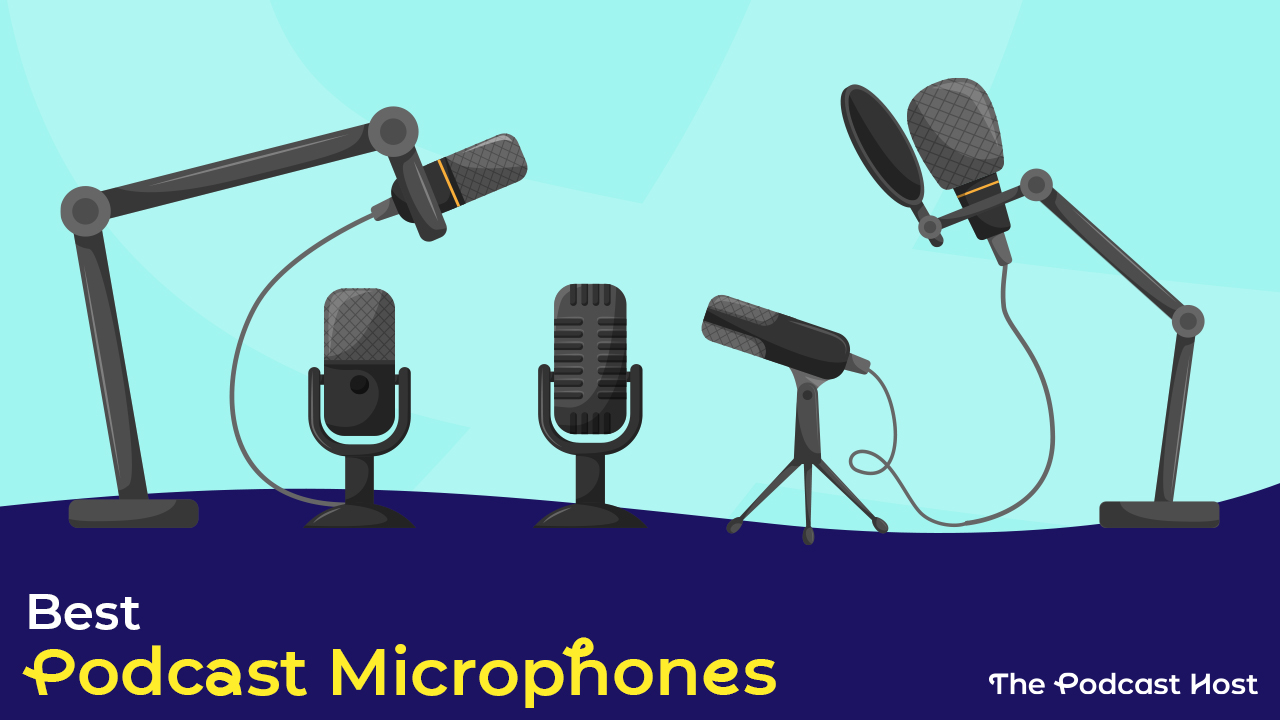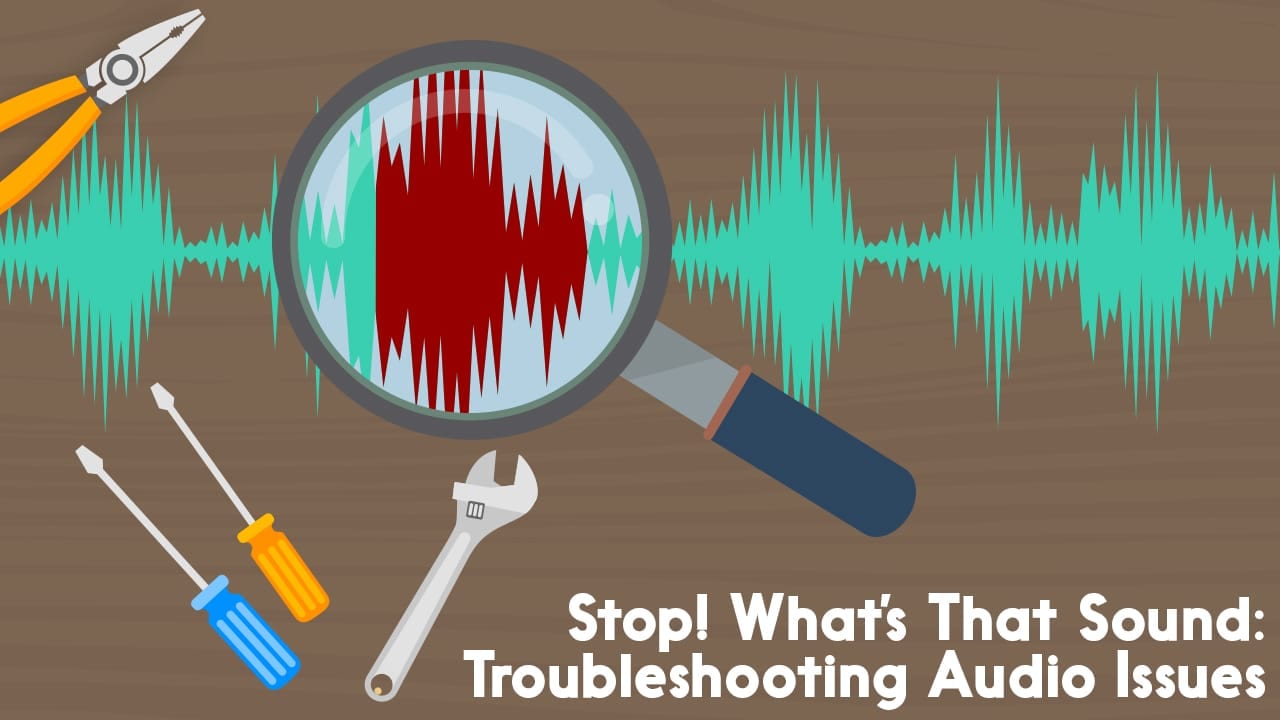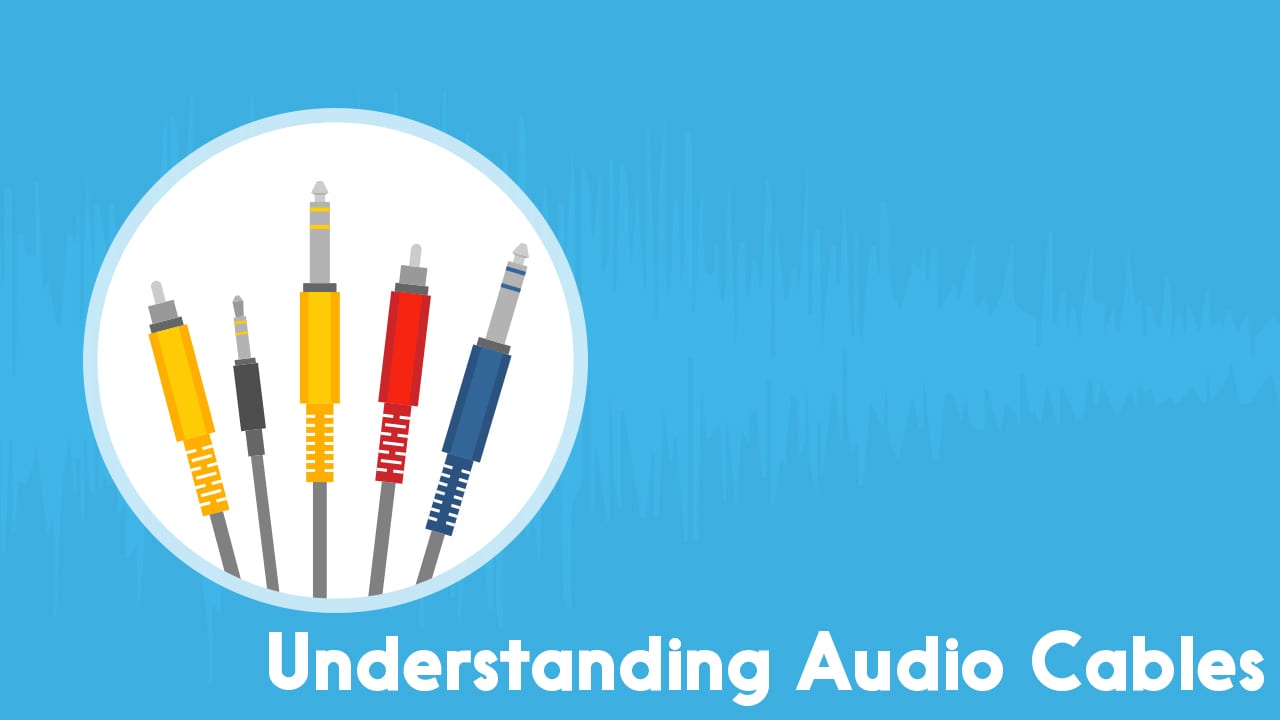Condenser Vs Dynamic Mics | A Beginner’s Guide to Microphones for Voice
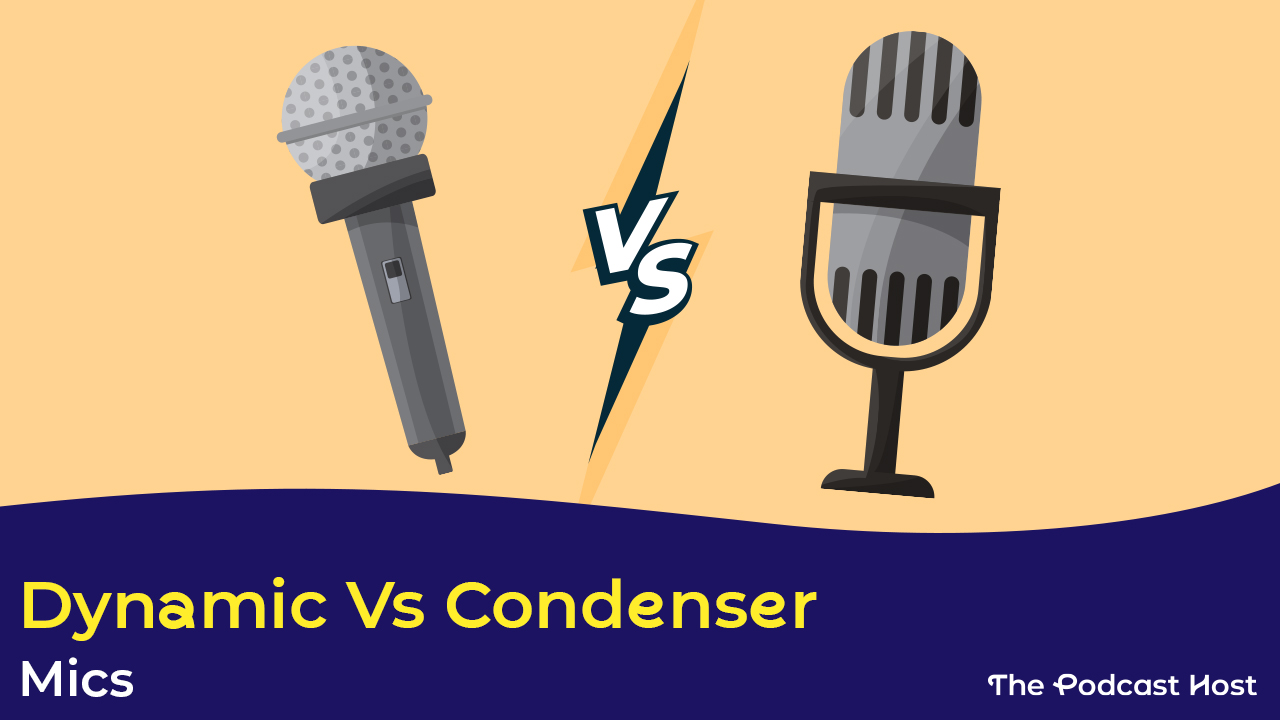
Condenser Vs Dynamic Mics: At-a-glance
- The terms “condenser” and “dynamic” refer to two different ways microphones are built and function
- Both types of microphones have their potential pros and cons
- Dynamic mics are often more durable and can handle high volumes without distortion
- Condenser mics are often capable of recording a more crisp and detailed sound
- Most vocal USB mics are condensers
- But the ultra-useful Samson Q2U is a dynamic mic
- So which type of mic is best suited to you? Read on and find out…
Searching for a new microphone can be a daunting task. There is no shortage of info and options out there, and, sometimes too much choice is as bad as none at all.
When searching for a new mic, you’ll have a few “this or that” choices, too. XLR Vs USB is one. Condenser Vs Dynamic is another. It’s the latter we’ll be focussing on in this post, so let’s find out exactly what these terms mean and why they matter.
Condenser vs Dynamic: Transducer Types
Microphones are a form of transducer. This means that microphones convert energy from one form (acoustic or kinetic energy) to another (electrical energy). There are three transducer types commonly associated with microphones: condenser, dynamic, and ribbon transducers. However, for most vocal applications dynamic and condenser microphones are used. Ribbon microphones, while excellent in quality for sound reproduction, tend to be very expensive and extremely delicate.
So what’s the difference between dynamic and condenser mics? Let’s take a closer look at how they each work.
Dynamic Mics: How They Work
Dynamic microphones operate by suspending a coil of wire connected to a diaphragm inside a magnetic field. When sound vibrates the diaphragm, the coil vibrates and produces an electrical signal.
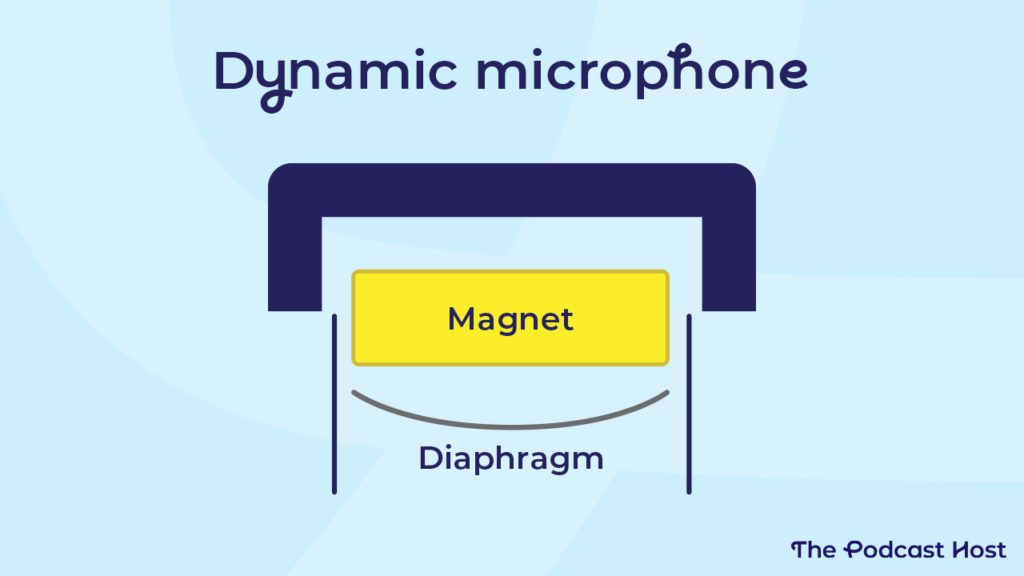
Dynamic Mic Characteristics
- durable
- handle heat and humidity well
- high volumes without distortion
- rougher, but usable, audio signal
Dynamic Mic Applications
Dynamic microphones are good for general vocals that don’t necessarily need accurate and smooth reproduction, such as interviews, hosting, and live venues.
Due to the rougher sound characteristics, dynamic microphones with a cardioid pattern (more on polar patterns in a bit) tend to eliminate more background noise, although they may lose some nuances in a performance. This makes them well-suited to podcast hosting, general voice recording, and recording voices outdoors for voiceover or interviews. They are also suitable for recording very loud items, such as drums, guns, and explosions.
Condenser Mics: How They Work
Condenser microphones operate by vibrating a conductive diaphragm against a charged backplate to convert acoustic energy to electrical energy.
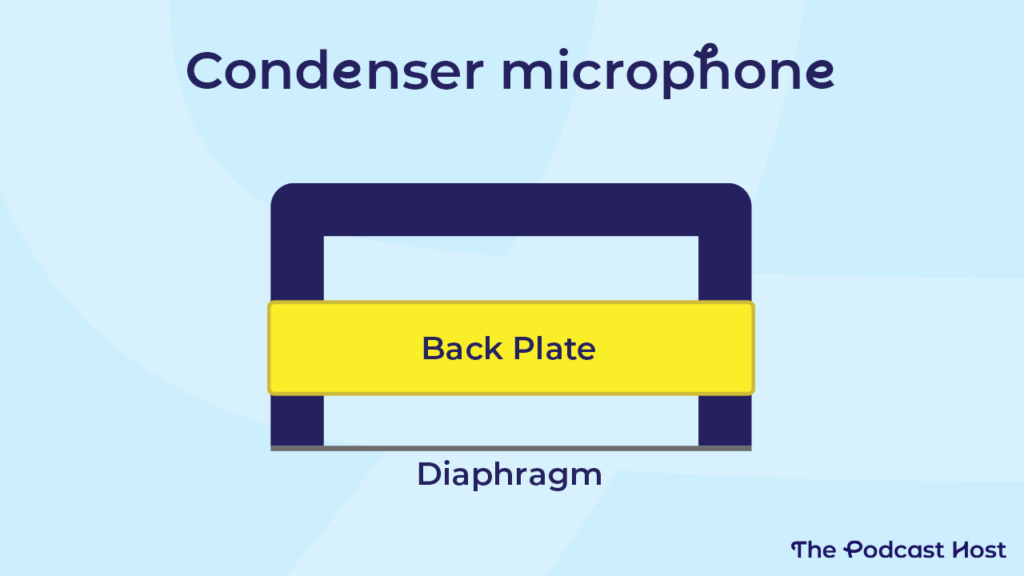
Condenser Mic Characteristics
- smooth frequency response
- clear, detailed sound with crisper highs
- excellent low-frequency response
- not suited to extremely hot or humid environments
Condenser Mic Applications
Condenser microphones are good for most studio applications, including voice acting. They produce a clarity of voice while giving it both warmth and presence.
Condenser microphones are the industry standard for voice actors. The Neumman U87 (pronounced NOY-man for you lubbers) is iconic and has defined the sound that the voiceover industry and producers look for. If you have around $4000 to spend on one microphone, I highly recommend it. For the rest of us, there are comparable mics that offer exceptional quality. We’ll talk through some affordable recommendations a bit further on.
Finally, condenser microphones are also excellent for field recording. They are more sensitive than dynamic microphones and have a flatter response that is suited to capturing detailed audio.
Condenser Vs Dynamic: Which To Choose?
If this is all a little overwhelming, don’t worry about it. You’ll find many podcasters out there who’ve been using the same mic for years and couldn’t even tell you if it was a condenser or a dynamic. Ultimately, you don’t need to know how your mic is built. You just need to judge it on how it sounds to you.
As I’ve said, we’ll be pointing to some recommendations shortly. But this next section on polar patterns is worth a quick look. If you own a mic with multiple polar pattern settings, then choosing the right one for your situation can make a big difference in your audio quality.
Vocal Mic Factors Beyond Condenser Vs Dynamic
The choice between dynamic and condenser microphones is only one chapter of a bigger story. There are other factors, too. One of the most important is actually what’s known as polar or pickup patterns.
Polar Patterns
Polar patterns illustrate how a microphone reacts to sounds coming from different directions. There are several polar pattern types, but our main focus for vocal microphones is on omni and cardioid polar patterns.
Omni
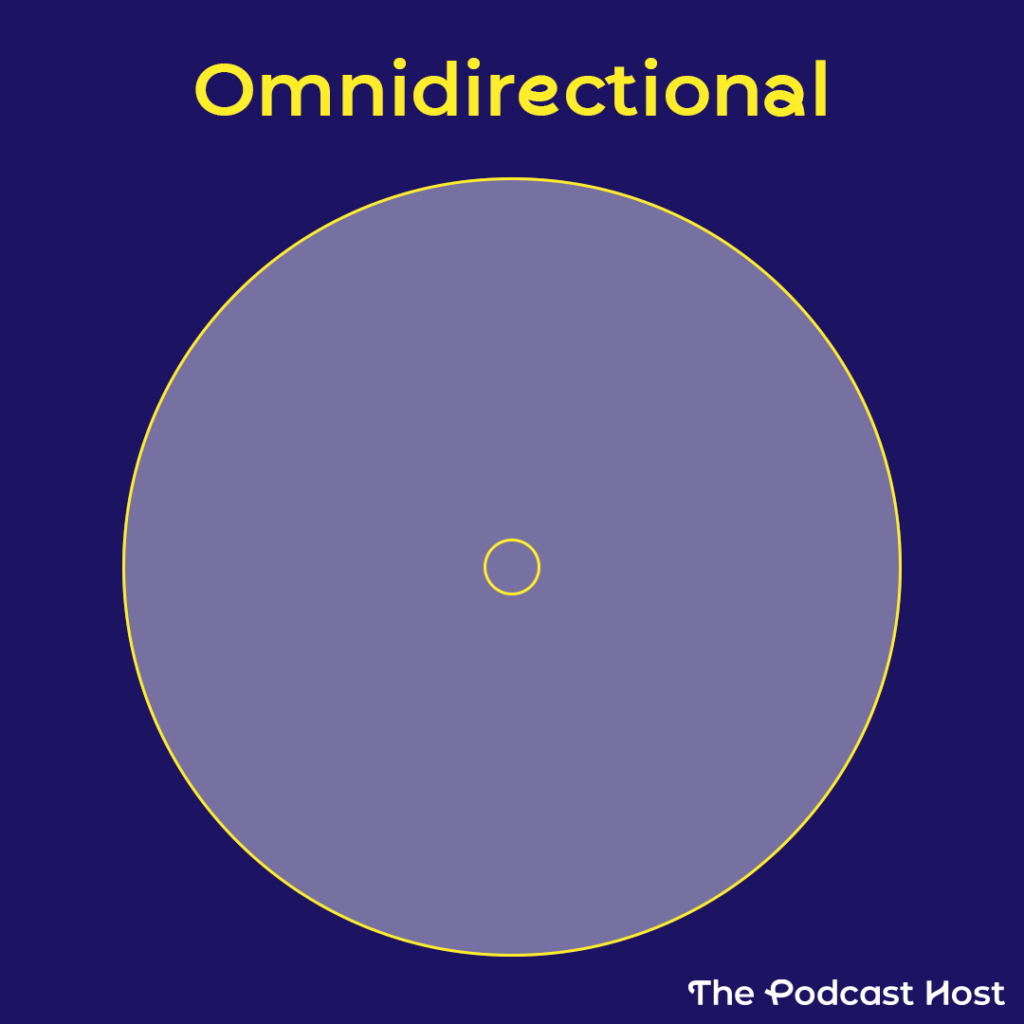
An omnidirectional microphone receives sound with equal sensitivity from all directions. This means that audio coming from the rear and to the sides of the microphone will be picked up with equal volume and clarity.
Omni Characteristics
- pick up of room reverberation
- extended low-frequency response
- lower cost
Omni Applications
Omni microphones are good for recording situations where sound isolation is not needed or wanted. They are particularly useful for interviews and situations where more than one vocal needs to be recorded, but sound isolation is not a factor.
Cardioid
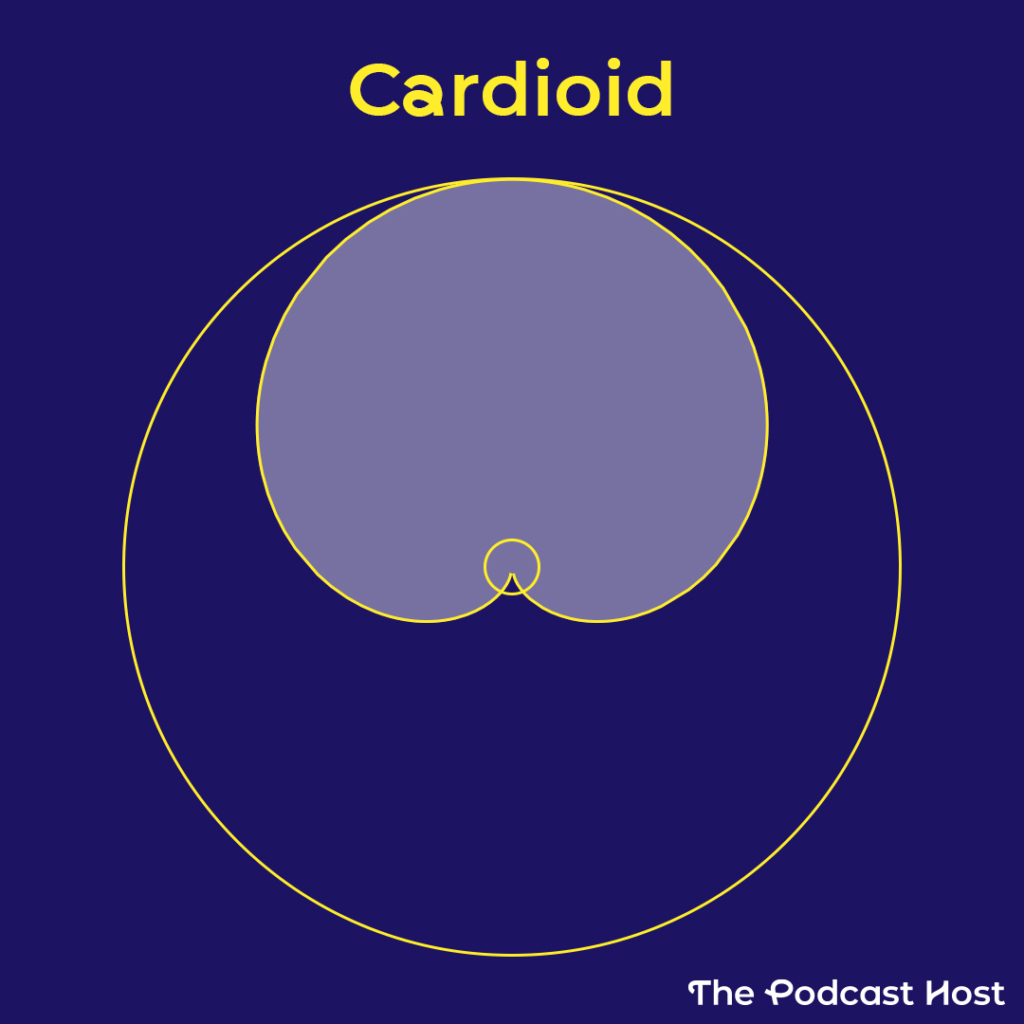
Cardioid microphones are most sensitive at the front of the microphone, typically about 6dB less sensitive to the sides, and around 20dB less sensitive to the rear of the microphone.
Cardioid Characteristics
- less reverb pickup than omni
- less room noise pickup than omni
- minimises off-axis pickup
Cardioid Applications
Cardioid microphones are ideal vocal microphones for one-voice-one-microphone applications. Voice actors and show hosts benefit from off-axis pickup reduction focusing the sound on what matters most: the speaker’s voice.
The majority of studio-based professional audio requires unidirectional microphones (cardioid, hypercardioid, or supercardioid). Voice actors and podcast hosts (and vocalists!) are likely to find that microphones with a cardioid polar pattern will suit their needs best. Hypercardioid and supercardioid mics work well, too, depending on your voice and application. However, they tend to be more expensive and lack the warmth that a large-diaphragm cardioid delivers to more resonant male and female voices.
Here’s our full guide to microphone polar patterns, if you’re in the market for some geeky audio engineer tattoo ideas.
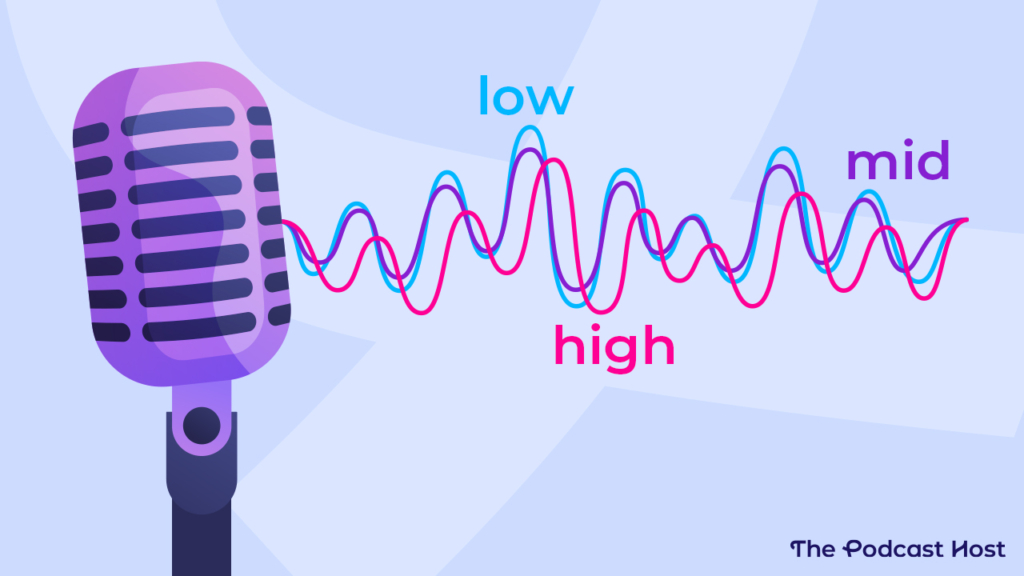
What Is Frequency Response?
Another key factor beyond the dynamic vs condenser discussion is that of frequency response.
Frequency response refers to the range of frequencies your microphone can accurately reproduce at an equal level. Understanding frequency response is one of your best tools when researching audio gear.
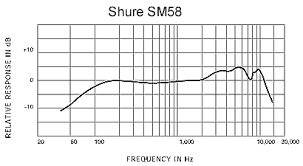
Simply put, frequency response shows how a microphone affects the way your voice sounds. In general, when looking at a frequency response graph, you want the graph to be as flat at possible in the frequencies the microphone is being used to produce. In terms of voice, we are most concerned with the frequencies between 80Hz and 12kHz: the human vocal range.
Some microphones will have slight peaks in the 5–12kHz range to improve presence, or some lift in the 500–800 Hz range to improve warmth. These characteristics can be desirable, depending on your production and scope.
In order to reduce low-frequency rumble and high-frequency hiss, microphones that roll off below 80Hz (high pass) and above 12kHz (low pass) are best suited for voice. This is especially helpful in cutting down on noise from vehicles and HVAC systems. However, this can also be accomplished by using an EQ highpass and lowpass to filter out these frequencies.
Other Factors Beyond Condenser Vs Dynamic
Beyond the questions of condenser vs dynamic, polar pattern, and frequency response, here are some other factors to consider when researching and purchasing a microphone.
Impedance
Impedance is a measure of a microphone’s resistance. Higher resistance in a microphone introduces hum and reduces high frequencies, making the recording sound noisy, or thin. Low-impedance, or low-Z, microphones allow long mic cable runs without introducing noise or reducing frequencies.
Sound Pressure Levels (SPL)
Sound pressure levels indicate the maximum sound intensity a microphone can handle before distorting. In general, a spec of 120dB or greater is preferable. For podcasters miking loud instruments, such as brass or drums, microphones with a higher maximum SPL are best.
Equivalent Noise Level
Also known as self-noise, the equivalent noise level is the electrical noise or hiss a microphone produces. In general, a self-noise specification of 28dB and lower is acceptable for quality recording.
Signal to Noise Ratio (S/N)
This is the difference (in dB) between a microphone’s sensitivity and the equivalent noise level. 64dB and higher is good.
Do I Need to Know All This?
Let’s be honest; most people don’t get into podcasting because they want to become audio engineers.
And whilst this is all useful knowledge, it’s understandable that you might find certain things a bit too technical, or even just a little boring. That’s totally fine!
With that in mind, we try to review as many different vocal mics as we can on the site. This hopefully means that we can give you the lowdown of each at-a-glance. We can run you through the key points. How does it sound? How does it look? How much does it cost?
That should be much easier than pouring over the intricacies of mic specs on Amazon. But, if that’s the sort of thing that does interest you, then be sure to bookmark this article.

Editor’s Note
There’s no doubt that some people go right down the rabbithole with mics, and with good reason. Vocals are one thing, but imagine having to record instruments, too, or even a full drum kit! Rather than one mic, you then need a whole set, and to cover an enormous range of frequencies. To see what I mean, check out the photo of a 7-mic setup at the bottom of this drum mic kit article.
Condenser Vs Dynamic: Mic Recommendations
Here are some reviews and guides worth checking out if you’re in the market for a new microphone.
Great Condenser Mics
Great Dynamic Mics
Bonus Resource: Free Online Mic Test
Need More Help?
Whether you need advice on equipment or guidance on any other aspect of podcasting, you’ll find the help you need in the IndiePod Community, where no podcaster is left behind.
And, if you’re feeling clued up on the podcast equipment side of things, it’s time to start thinking about software. Our podcast maker tool Alitu lets you record, edit, produce, publish, and host your show, all within one easy-to-use interface. Try it out free for seven days at alitu.com.
